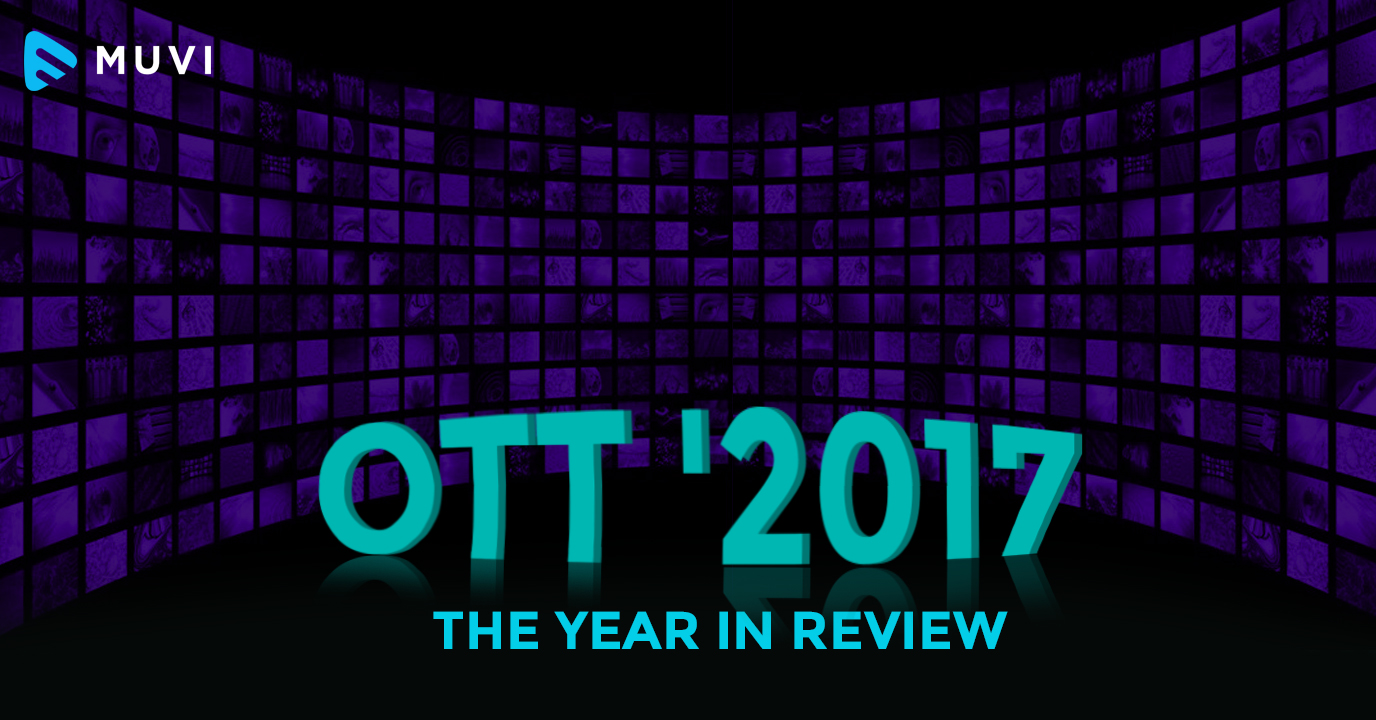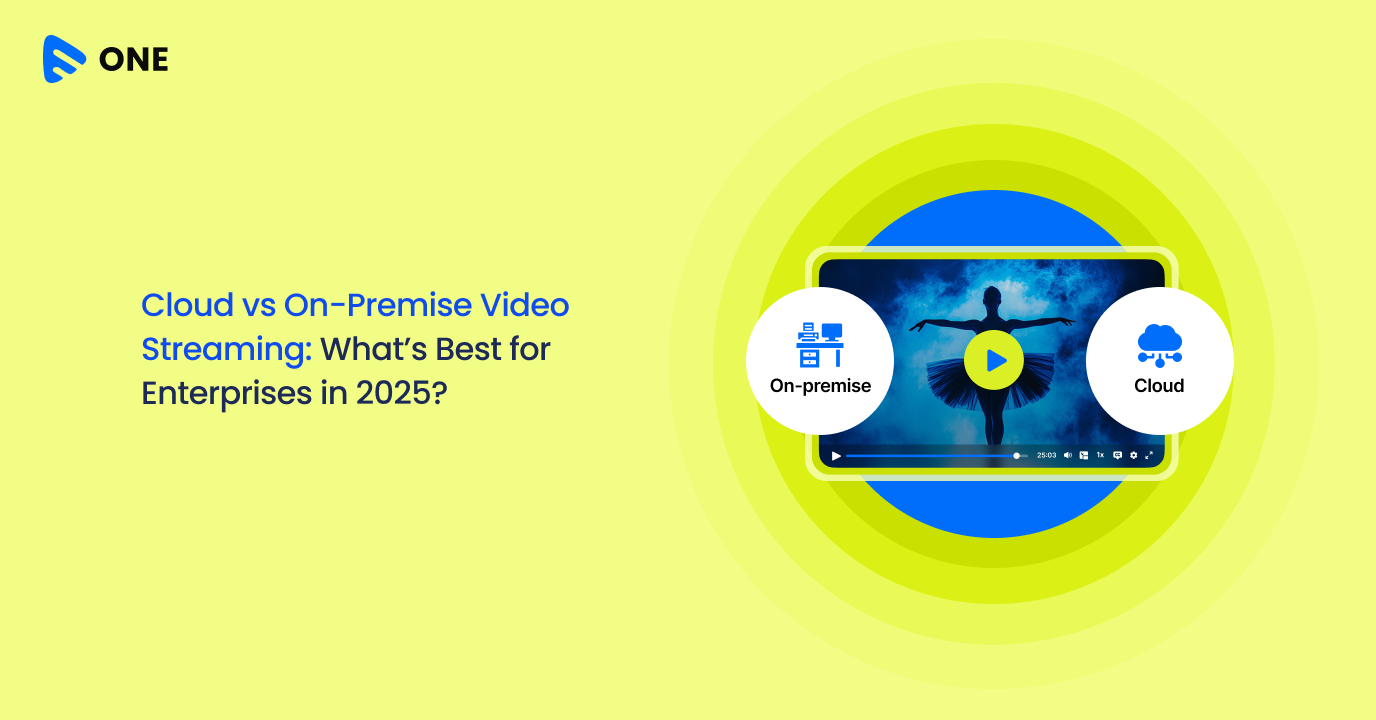Written by: Soumya Sekhar
The year 2017 has been witness to key trends and major industry movements for the Over-the-Top (OTT) industry. Globally, we have seen staggering numbers in terms of industry growth and forecast. We saw growth of cord-cutting, live streaming and the advent of new trends such as public binging, original content production, platform hybridization, etc.
According to a study by MoffettNathanson, more than 2.6 million people have cut the cord this year. Traditional pay-TV providers who offer services via cable, satellite transmission, and telephone lines have lost more than 1.7 million subscribers.
Investment in Original Content
The cost of acquiring content is inarguably the biggest contributor to any company’s annual budget. It is claimed that Netflix has spent about $8 billion this year on content; of which the company has spent $1.5 billion on creating original content. And that’s not the end. The company plans to raise its spend on original content by a greater magnitude.
In terms of share of viewing, there have been significant revelations for the year 2017. Netflix leads the pack with a whopping 40% share while Amazon Prime Videos could only occupy 7% of viewership share.

Consumption trends were largely influenced by the delivery medium used. Consumers have different preferences as to which streaming device best suit their viewing pattern; and that decided the fate of OTT hardware this year.
Worldplay networks revealed annual figures about streaming and OTT devices, some of which are that
- 40% of users own a video streaming box or a streaming stick
- 30% households have a smart TV
- 28% have a connected gaming console
- 25% use a connected DVR
- 36% of viewers watch long-form content via mobile
- 48% of viewers use apps to watch video on their mobile device
- 62% of mobile viewers use YouTube to discover video
Battle of the Bosses
There has been a cold war going on among Amazon, Google, and Apple. All three of them have a host of OTT offerings in terms of streaming services, operating systems, as well as hardware.
Amazon developed Fire OS developer that supported Fire TV stick, but not Google Chromecast or Apple TV. Amazon has also discontinued Google and Apple’s hardware products on its e-commerce sites. Amazon also went to the extent of discontinuing support for YouTube on Amazon Fire TV.
Similarly, Apple TV being a competitor of Amazon Fire TV boxes and Fire TV streaming sticks, was dropped from Amazon’s e-commerce store.
However, Apple took the high road and recently announced that they intend to collaborate with Amazon to bring the Amazon Prime Video app to Apple TV in more than 100 countries. Apple Chief Executive Tim Cook had earlier revealed plans to include Amazon’s streaming service on Apple devices, by the end of the year, and rightly so lived up to his words despite the ongoing tussle. Amazon’s Prime Video Apple TV app has already hit the App Store and customers can install it.
The three leading tech giants of the world having a strong grasp over the online streaming business is a big boon for consumers as they can only expect advanced product engineering and enhanced streaming quality owing to their development capabilities. But at the same time, there is and will be a fair amount of friction between the big players while trying to win their share of competitive advantage.
[ On Muvi, deliver your online library to multiple devices including Apple, Roku, iOS, and Fire.]
Growth Drivers
The biggest growth driver for OTT in 2017 was the telecommunications industry. The year witnessed a drop in mobile data prices by more than 10 folds, and this has revved up data consumption to a level like never before. Smartphone penetration coupled with cheaper data rates has spoiled consumers with regard to their choices for entertainment. There’s a whole new host of online titles available on mobile phones, waiting to be explored by OTT-nevers.
Besides slashed data rates and network coverage, the other thing that the telecom industry has contributed is content carriage. Owing to the depth of coverage that telecom majors around the world have attained, many of them have bagged contracts to distribute 3rd party OTT services to their post-paid subscribers. Chunghwa telecom from Taiwan was signed by Fox+ to carry the streaming service in local market. Vodafone did the same for Filmin in Spain, and for Sky Tv in New Zealand.
Other telecom providers saw this as an opportunity for themselves and launched their own streaming service. Canadian telecom major Bell launched its own streaming service in the country. Australia’s A1 Telecom launched A1 Free Stream, Algar Telecom in Brazil introduced Vid+, Cell C launched Black in South Africa.
With improved public infrastructure, and hospitality standards, WiFi coverage has become stronger and more consistent. Be it a cafe or a railway station, a hotel or an office facility, we now have free WiFi everywhere. This has made public streaming “a thing”; super streamers are now able to watch content at public places without any obligations.
Evolving technology is another factor that’s driving the quality of content production and streaming. Companies are collaborating to share technological and engineering capabilities to create enhanced streaming solutions. Recently Huawei and Dolby Laboratories announced the world’s first set-top box for Internet Protocol television (IPTV) with support for Dolby Vision high-dynamic-range (HDR) technology. Amazon launched a 4K HDR version of the Amazon Fire TV stick. Samsung extended support for HDR10+ in addition to HDR10 video format for Amazon Prime Video.
VR: Ready to take off
Virtual Reality (VR) – Through the use of specific hardware and software, virtual reality – sometimes called ‘immersive multimedia,’ as well as ‘virtual environment (VE)’ or ‘computer-simulated life’ – can help replicate or create an environment, based on reality or the imagination of the creator. The aim of VR is to create a sensory experience for the user sometimes including sight, touch, hearing, smell, or even taste.
The installed base of virtual reality headsets was estimated at around 7 million this year and is forecast to grow to 37 million by 2020. The Samsung Gear VR was the best selling VR device, having sold more than 4.3 million units. Other virtual reality devices that are faring well are the PlayStation VR, HTC Vive, Google Daydream, and the Oculus Rift.
The VR industry is growing at a fast pace, with revenues from virtual reality hardware and software projected to increase from 3.7 billion U.S. dollars this year to more than 40 billion U.S. dollars by 2020.
What’s Trending?
AVOD tends
Globally, 56.9 percent of people find advertising during online videos disruptive, with only 9.0 percent saying it is not disruptive. Although viewers find advertising disruptive, 60.0 percent are willing to accept a short advertisement before the video if the content is free. However, only 27.4 percent of viewers are willing to accept multiple advertisements in longer duration content, even if the content is free.
Binge Watching
Binge watching has transformed the course of how content is being watched and how it is produced. A recent survey in the US, showed that 70% of the consumers go for binging, with drama accounting for maximum viewership at 53%. People get hooked on to drama and thanks to the much trending #fomo (fear of missing out), every millennial is in the race to be the first one to finish watch popular online series.
Public Binging
Netflix conducted a study in November 2017 to analyze public binging trends. The study reveals that 67% of users are comfortable watching their shows in public, even if it creates social awkwardness. Also, 37% admit to watching at work and 12% are willing to watch even in a public restroom.
That’s how important mobile access has become for bingers while on-the-go. Although it might get awkward while watching explicit scenes in public, only 18% of public bingers expressed discomfort. In fact, 77% of the public bingers continued watching. The study also shows that 65% public bingers have laughed out loud, and 20% have even cried. The study claims that Mexicans and Indians as the largest public-binging populations in the world, at 89% and 88% respectively.
A major setback this year was that the World Wide Web Consortium published its standard for browser-based Digital Rights Management (DRM). This standardization pushed three billion web browsers into vulnerability with new attack-surfaces and new risks to their financial, familial, educational, personal, and professional details. The move was backed by few but opposed by many and the W3C consortium has stalled the standardization until its reevaluation, the coming year.
[ Build your streaming service on Muvi and protect your content and user details with studio-approved DRM. ]
2017 OTT facts and figures have set a mobilizing tone for the year coming ahead. We can expect a great deal of developments in the audio streaming space, content protection, and delivery. This was a gainer for most of the players in the SVOD space, and sports enthusiasts propelled a range of new live streaming services.
For more facts and stats visit Industry Updates from Muvi.















Add your comment